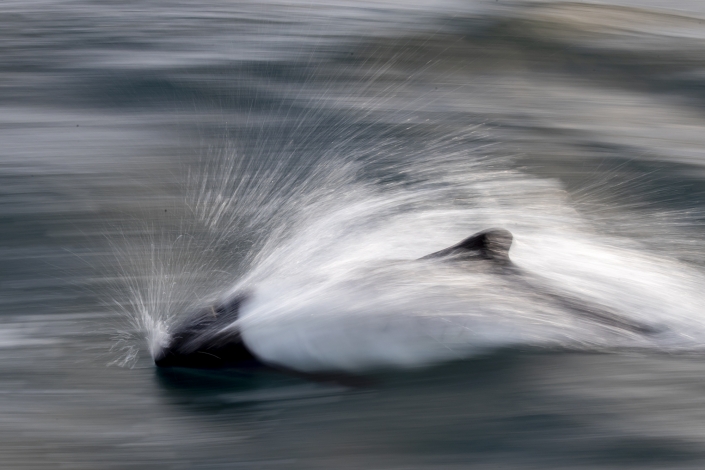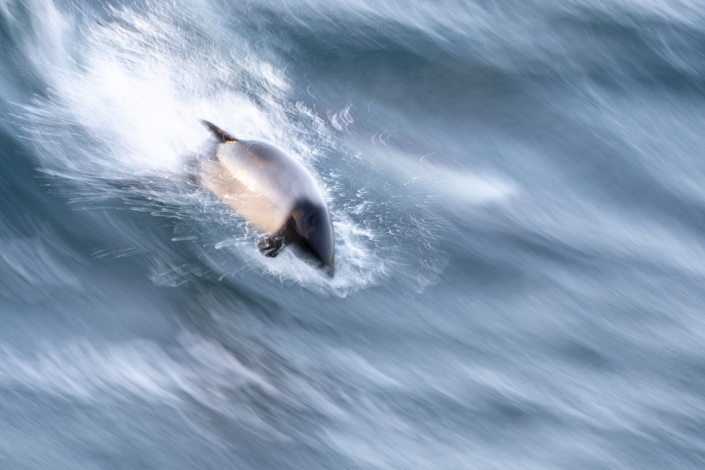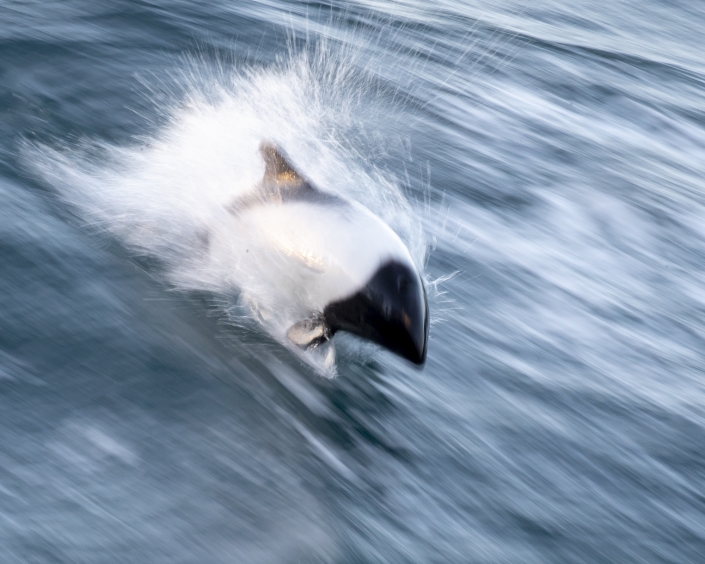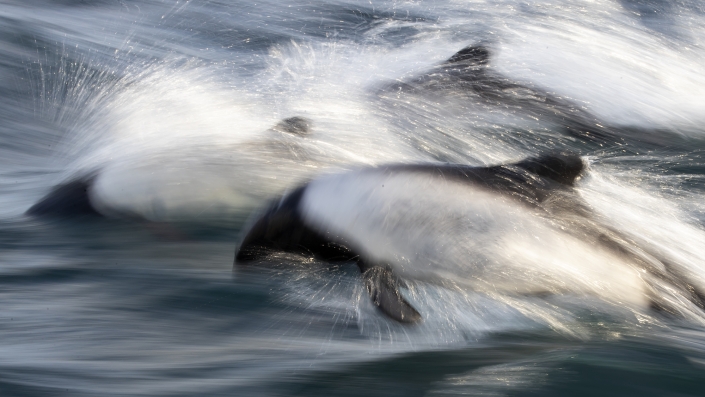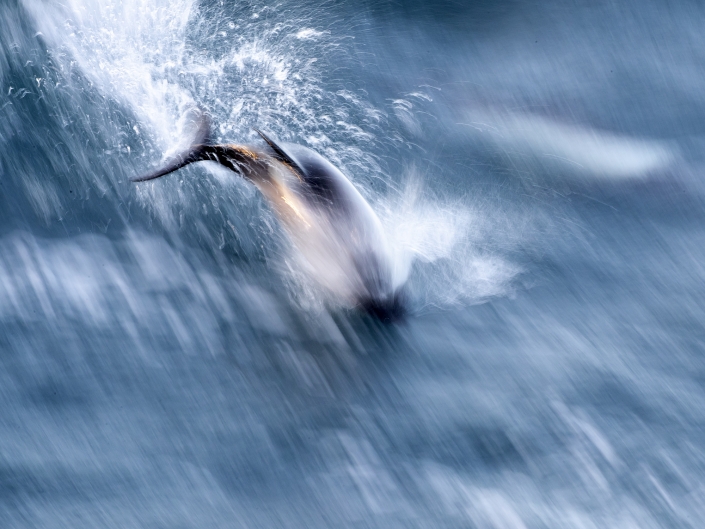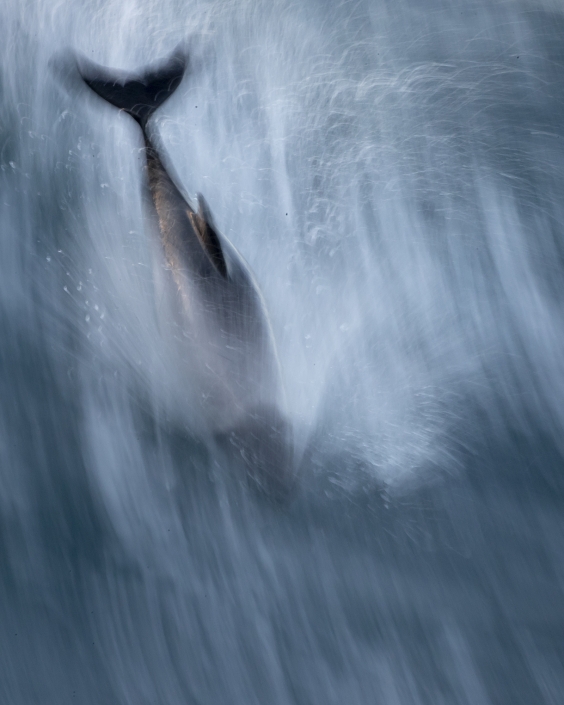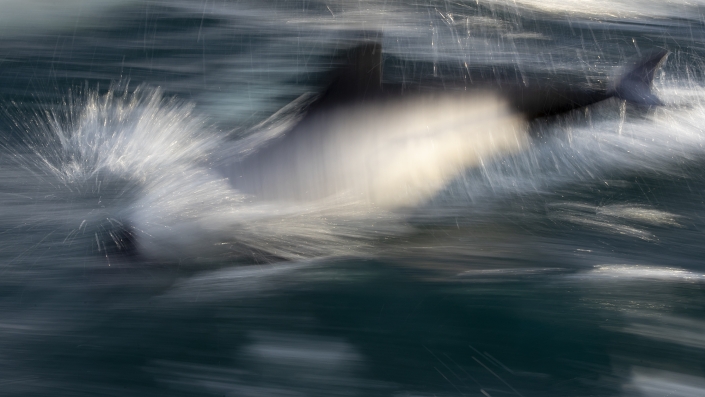This post is also available in: Swedish
Commerson’s dolphin – Cephalorhynchus commersonii
Commerson’s dolphin C ephalorhynchus commersonii
also referred to by the common names jacobita, skunk dolphin, piebald dolphin or panda dolphin, is a small oceanic dolphin of the genus Cephalorhynchus. Commerson’s dolphin has two geographically-isolated but locally-common subspecies. The principal subspecies, C.c.commersonii, has sharply-delineated black-and-white patterning and is found around the tip of South America. The secondary subspecies, C.c.kerguelenensis, is larger than C.c.commersonii, has a less-sharply delineated dark and light grey patterning with a white ventral band, and is found around the Kerguelen Islands in the Indian Ocean. The dolphin is named after French naturalist Dr Philibert Commerson, who first described them in 1767 after sighting them in the Strait of Magellan.
Commerson’s dolphin is very active. It is often seen swimming rapidly on the surface and leaping from the water. It also spins and twists as it swims and may surf on breaking waves when very close to the shore. It will bow-ride and swim behind fast-moving boats. It is also known to swim upside-down, which is thought to improve the visibility of its prey.
This dolphin feeds on a mix of coastal and pelagic fish and squid. Those in the South American subpopulation supplement their diets with crustaceans.[citation needed] Individuals have been recorded as entering the Santa Cruz River to forage there during low tide.



